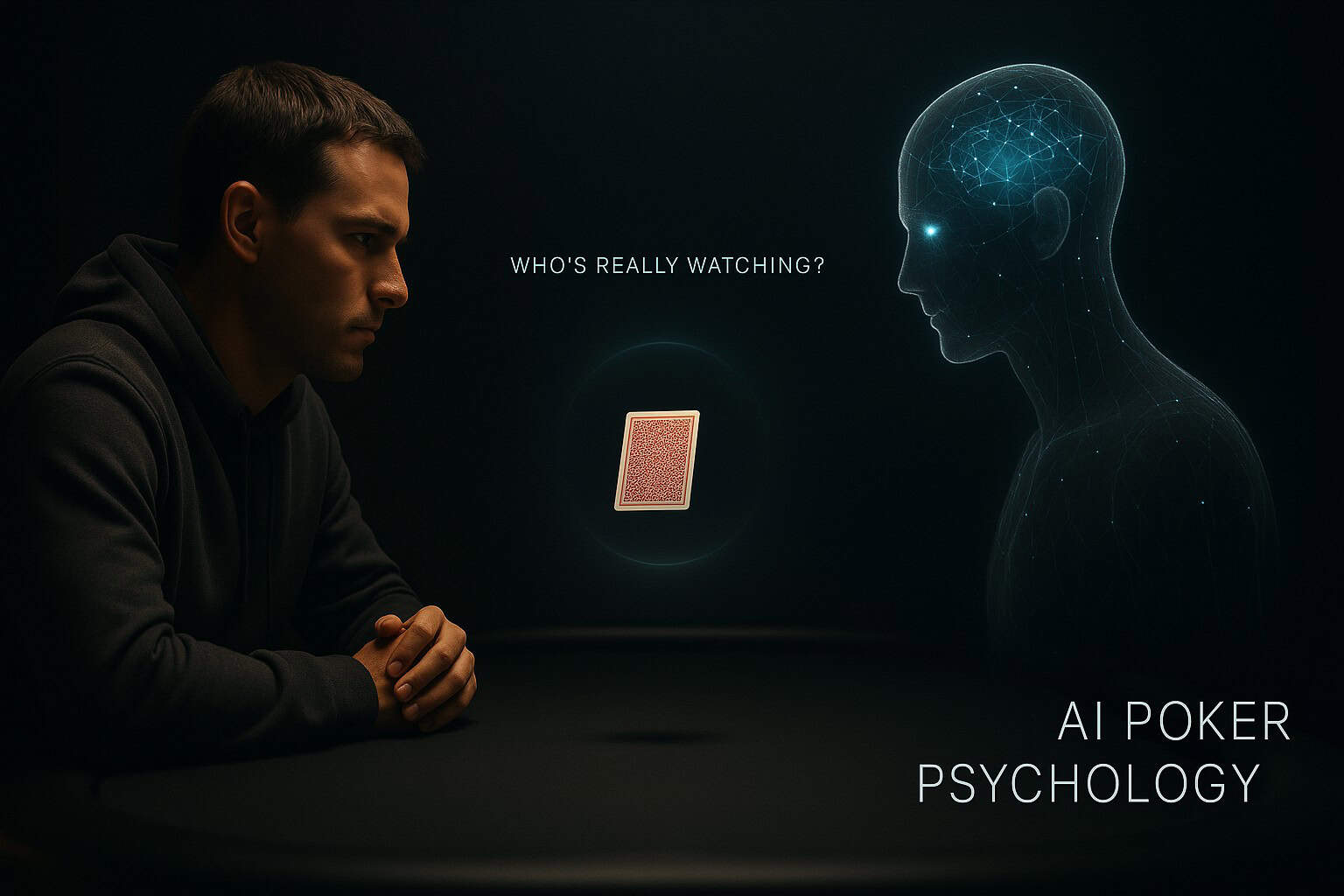
Can Poker Bots Read You?
You’re sitting at a poker table—real or virtual—and you feel it: someone’s onto you. A tiny hesitation, a slightly-too-big raise, the second barrel when they shouldn’t have it.
You look again…
It’s not a person. It’s a bot.
And it didn’t just compute your range—it read you.
Welcome to the strange and rapidly evolving world of AI poker psychology, where algorithms don’t just know the math… they might be learning you.
From Calculations to Character Reads: The Evolution of Poker AI
For years, bots were just math machines. They calculated ranges, EV, ICM pressure. They didn’t care if you were nervous or tilted. They weren’t trying to exploit your patterns, just optimize their own.
That changed.
Modern ai poker bots have started integrating behavioral models—blending game theory with real-time psychological profiling. They track:
- Timing of your decisions
- Bet sizing irregularities
- Patterns across sessions
- Reaction to aggression
- Emotional tells inferred from click patterns
Some even combine machine learning with databases of prior opponents. Like a poker-trained digital profiler, they adjust play based on your past behavior.
They’re not just solving the game anymore.
They’re solving you.
Behavioral Modeling: How Bots Build a “You”
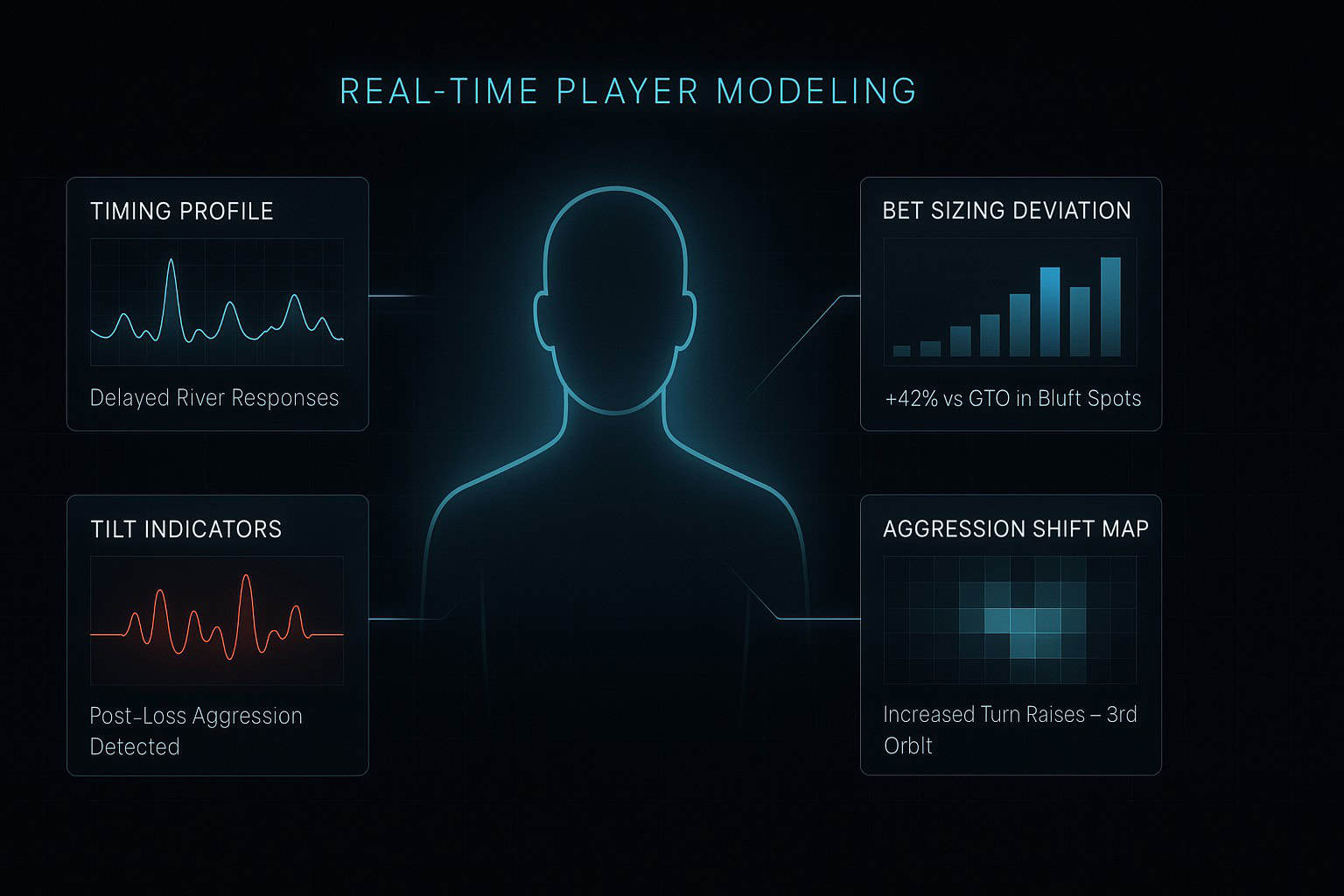
Let’s break it down.
- Timing Analysis
Even online, how fast or slow you act gives off info.
Consistent fast folds? You’re tight.
Long tank-check on the river? You’re uncertain.
AI can track these over dozens of hands and correlate them to actual holdings, creating a timing map of your tendencies.
- Bet Sizing Deviation
Many players default to sizing tells—betting bigger when bluffing, smaller when blocking. Bots trained with regression models can detect these deviations and exploit them ruthlessly.
- Pattern Memory
Using recurrent neural networks (RNNs), bots can remember your prior sessions. If you three-bet light out of the blinds 3 days ago, the bot will recall—and 4-bet you this time.
- Emotional Behavior Inference
Yes, even tilt gets tracked. Rapid shifts in aggression, snap calls after losing big pots, erratic lines post-cooler—all signal frustration.
Bots don’t feel emotion, but they sure can weaponize yours.
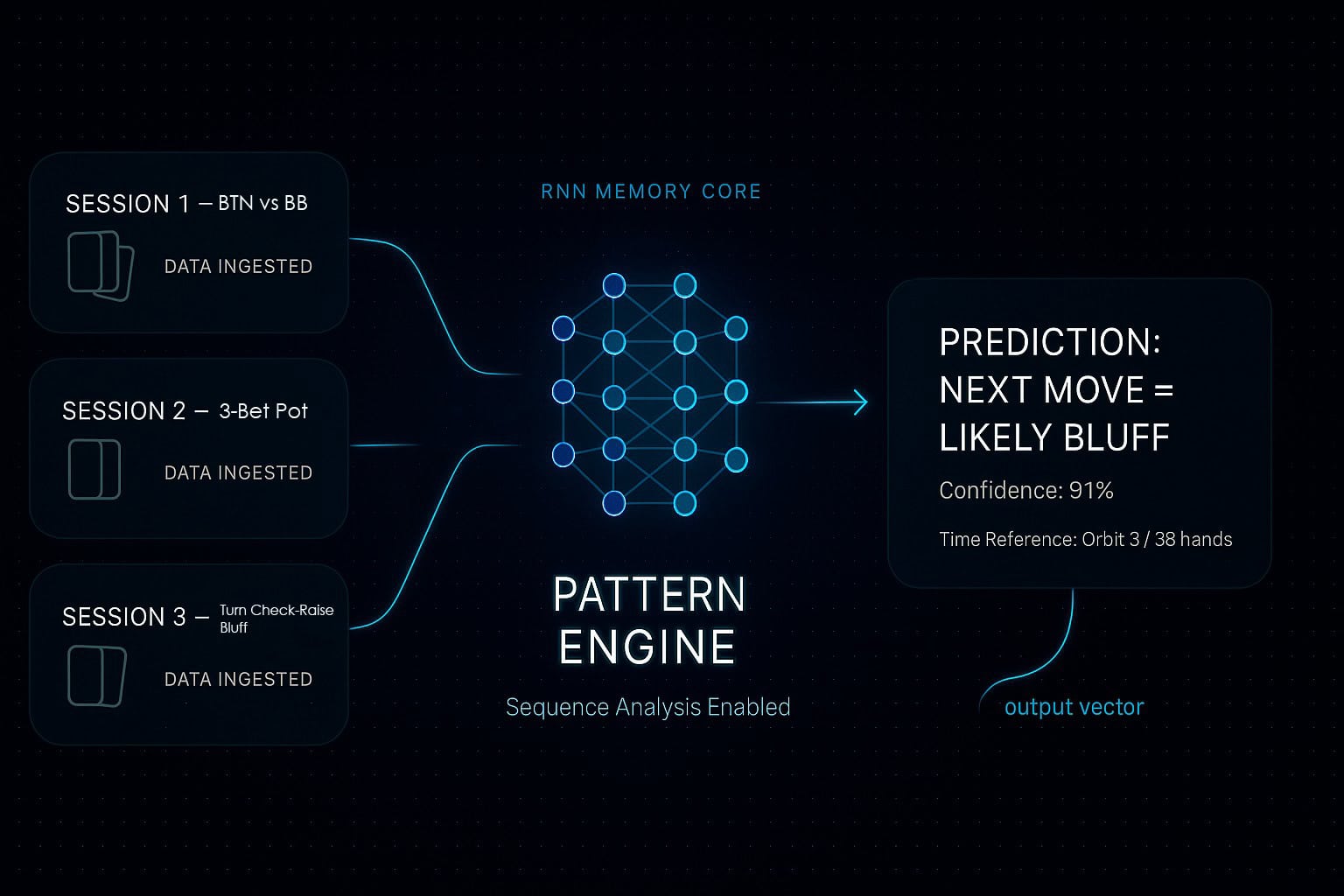
The Ethical Line: Smart Tools or Digital Spies?
This is where things get murky.
Most poker players accept tools like solvers and poker cheat sheets for training. But bots that adjust to human psychology in real time—is that crossing the line?
Technically, using such poker bots online during play violates Terms of Service on most platforms. These are considered Real-Time Assistance (RTA) tools, and they blur into the territory of poker cheat software.
But what if you’re not using them in-game?
What if you build a bot that plays like you, trains against you, and helps you refine your strategy offline?
Here’s where many high-level players are already experimenting:
- Simulating themselves vs AI in psychological scenarios
- Training AI models to recognize their own leaks
- Using AI poker bot shadows to review not just decisions, but mindset
Ethically acceptable? Most would say yes.
Can AI Actually “Read” Humans?
In a limited way—yes.
But don’t confuse this with true intuition. Bots don’t “feel” your fear. They don’t interpret body language or voice. They analyze probabilities, time-based signals, and game patterns.
Still, the result can be uncanny. When an AI makes a perfect hero call, it’s not guessing. It’s saying: based on your history and this pattern, you don’t have it.
Think of it less like Sherlock Holmes, more like Google Ads—eerily good at profiling, but based entirely on data.
Human Psychology vs AI Decision-Making
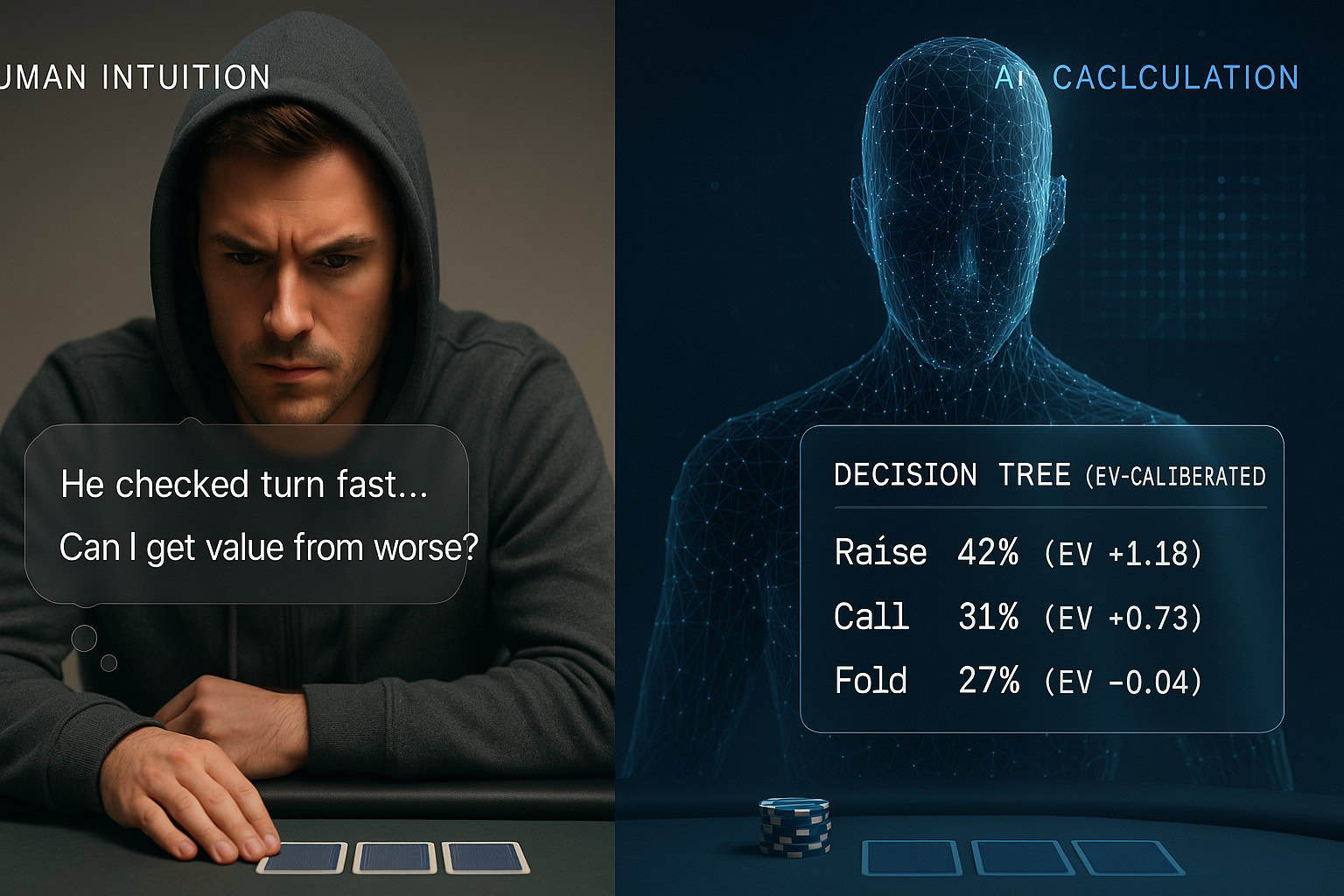
Here’s the twist: humans are also trying to read bots.
Experienced players facing suspected poker online bots often:
- Test for exploitability by running odd lines
- Look for robotic timing or perfect GTO patterns
- Induce tilt (though bots don’t tilt… yet)
The game becomes less about bluffing a person—and more about outsmarting a machine that might be modeling you better than you model it.
The irony?
Sometimes playing like a bot is the only way to beat one.
Poker Training with Psychological AI
Off the felt, AI-based tools that incorporate psychological modeling are now part of the study stack.
Some elite players are using:
- Simulated opponent generators based on common psychological types
- AI-driven spot reviews that ask not just what you played, but why
- Custom bots that adjust to your personal tendencies and show you how others would exploit them
It’s like having a sparring partner that watches every move, remembers every leak, and never gets tired.
And unlike a real coach, it doesn’t sugarcoat.
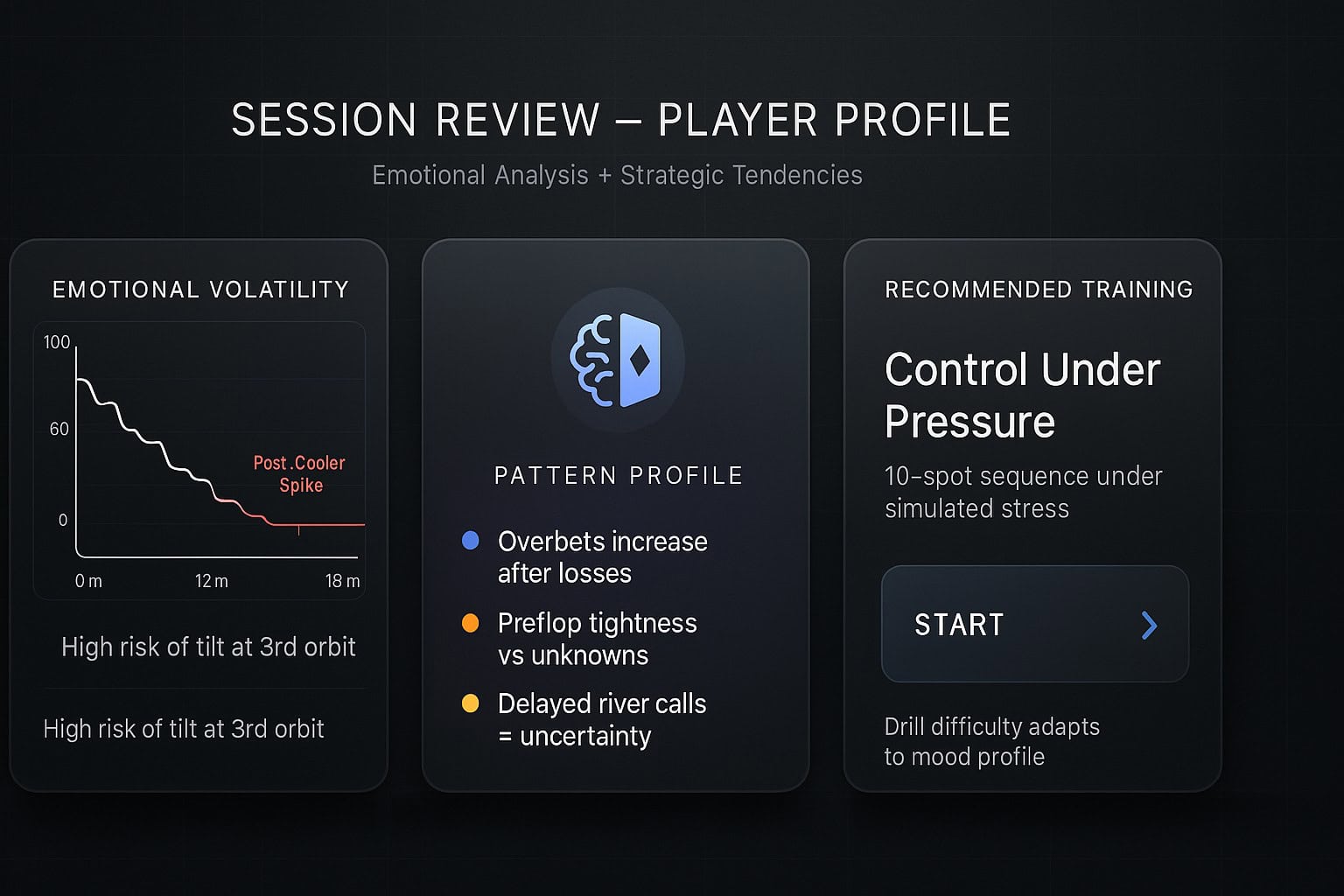
AI Poker Psychology in Live Play?
This is where it gets speculative—but not implausible.
With advances in:
- Real-time facial recognition
- Micro-expression analysis
- Clickstream behavior modeling
- Sensor-based stress tracking
…AI could eventually provide live feedback to players—or casinos—about likely emotional states of opponents.
That would push us into wild territory:
- Glasses that vibrate when opponent’s stress spikes
- HUDs that flash when bluff probability rises
- Digital assistants that coach you mid-hand
Right now, these are concepts. But tomorrow? They may be the new poker cheat sheet—or the new poker controversy.
Will AI Replace Psychological Edge?
Not quite.
Poker isn’t just decisions. It’s dynamics, table feel, presence, long-term image.
AI will continue to mimic, analyze, and predict human behavior—but the emotional complexity of a live table is still (for now) deeply human.
That’s why top players use AI to train—not to replace their instincts.
Final Thought: Learn From the Bots Before They Learn You
Whether you’re battling bots, using them to improve, or just trying to stay human in a sea of solvers—AI psychology is already part of the modern game.
You can’t stop bots from learning.
But you can make sure you learn faster.
And the best players?
They’ll use AI not to think like a bot—but to think beyond one.
